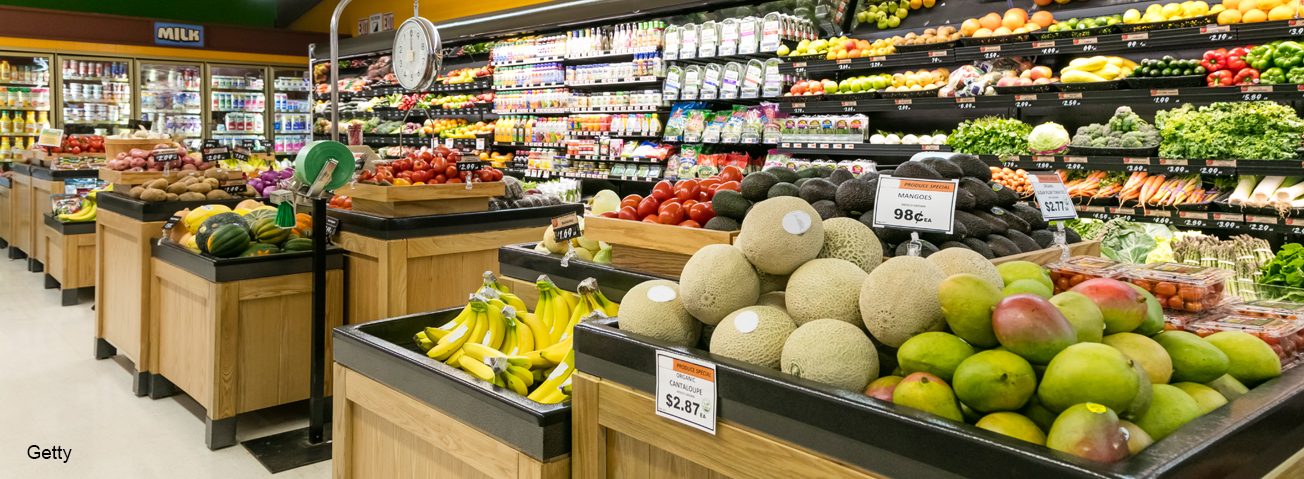
U.S. Fruit Imports Grew By $8.9 Billion Over the Last Decade to Meet Rising Demand
- by Bart Kenner
- 9/1/2020
U.S. consumption of fresh fruit has exceeded domestic production for many years. Income growth, combined with improvements in infrastructure and better market access due to trade liberalization, has increased Americans’ year-round access to fresh fruits—most of which are often grown seasonally in the United States. Availability of raspberries on grocery shelves in the dead of winter and avocados in grocery stores throughout the country are just two examples of the broader access to fresh fruit that Americans now enjoy because of these developments.
Increased purchases of fresh produce over the last decade can be attributed in part to increased demand, as income per capita followed an upward trend from 2009 to 2019, according to the U.S. Census Bureau. Meanwhile, free-trade agreements such as the former North American Free Trade Agreement (NAFTA, but as of July 1, 2020, replaced by the United States-Mexico-Canada Agreement, or USMCA), the Dominican Republic-Central American Free Trade Agreement (CAFTA-DR), and bilateral accords with Peru and Colombia have provided access to increased supplies of fresh fruit to meet increasing demand. Worldwide economic shocks caused by the COVID-19 pandemic have changed some of those long-running trends and are expected to have at least a short-term negative effect on agricultural imports.
Increased fresh fruit import values are responsible for almost one-third of the growth in U.S. horticultural product imports over the 10 years from fiscal year (FY) 2009 to FY 2019 (see figure above). The increase reflects both growing volumes of consumption and the higher prices that often accompany increased demand. The inflation-adjusted value of U.S. fresh fruit imports increased from $5.1 billion to $14.0 billion. By FY 2019, fresh fruits made up the largest portion of horticultural imports—21 percent—in value terms (see figure below).
Consumers have preferred more fresh produce as many Americans substitute fresh for processed foods in pursuit of healthier diets. Additionally, increasing ethnic diversity and growing appreciation for more tropical fruit have led to growing imports of fruits such as pineapples, mangos, and papaya.
The top five imported fresh fruit products by value accounted for 75 percent of all U.S. fresh fruit imports in FY 2019. Between FY 2009 and FY 2019, berry imports increased from $0.5 billion to $3.3 billion. Over that same period, avocado imports increased from $0.6 billion to $2.7 billion, banana imports increased from $1.2 billion to $2.2 billion, grape imports increased from $0.9 billion to $1.6 billion, and pineapple imports increased from $0.4 billion to $0.6 billion (see figure below).
Since FY 2009, the value of U.S. fresh fruit imports from the five leading source countries has increased in inflation-adjusted dollars (see figure below). Fresh fruit imports from Mexico have grown the most over that period. While the value of almost all fresh fruit products imported from Mexico has increased over that time, avocados accounted for 89 percent of the $5.3 billion increase in total fresh fruit imports from Mexico. Over the same period, citrus and blueberries made up the bulk of the remaining $0.7 billion increase in U.S. fresh fruit imports from Chile—$0.3 billion in the case of citrus and $0.2 billion in the case of blueberries. A $0.6 billion increase in banana imports was responsible for the bulk of the $0.8 billion increase in fresh fruit imports from Guatemala from FY 2009 to FY 2019. Peru’s largest single-product increase over the last decade, leading to a $1.1 billion increase in U.S. fresh fruit imports from that country, was the $0.4 billion increase in blueberry sales. Costa Rica increased sales to the United States of bananas and pineapples by $0.2 billion each, which made up almost the entire $0.4 billion increase in U.S. fresh fruit imports from Costa Rica.
With their warmer climates and alternate growing seasons, imported produce from these countries, together with domestic production, assure a year-round supply of many types of fresh produce. U.S. grocery shelves and restaurant kitchens are stocked with types of fruit that used to be consumed mainly during part of the year or by a smaller portion of consumers. Because of better access facilitated by trade agreements, increased disposable income from 2009 to 2019, and interest in a greater variety of produce, fresh fruit has played a larger role in the growth of U.S. agricultural imports than any other horticultural product type in the last decade.
This article is drawn from:
- Foreign Agricultural Trade of the United States (FATUS) - U.S. Agricultural Trade Data Update. (n.d.). U.S. Department of Agriculture, Economic Research Service.





